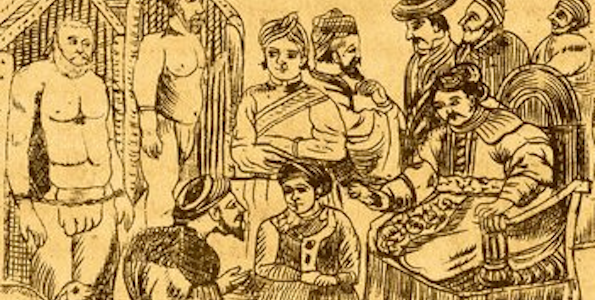Full-Text Paper (PDF): Bombay Islam: The Religious Economy of the West Indian Ocean, By Nile Green.
Table of contents
- What is Kobo Super Points?
- Reward Yourself
- Bombay Islam: The Religious Economy of the West Indian Ocean, – - Nile Green - Google Книги
- Join Kobo & start eReading today
What is Kobo Super Points?
For permissions, please email journals. You do not currently have access to this article. You could not be signed in.
Sign In Forgot password? Don't have an account? Sign in via your Institution Sign in. Purchase Subscription prices and ordering Short-term Access To purchase short term access, please sign in to your Oxford Academic account above. Empowered by the promotional possibilities of cheap vernacular printing and distributed aboard the steamships that plied the ocean from her quaysides, the reputations of Bombay's religious entrepreneurs were built on both the physical and imaginative fabric of industrialization.
Holy men not only sailed on steamships, they lifted them from the waves when typhoons surrounded them. The newly mechanized scale of the city's production of new Islams through religious 'firms' controlled by individual spiritual entrepreneurs or elaborate hierarchies of missionaries heralded a new era in religious history where every product bore the stamp of the industrial age: Joseph Conrad's Lord Jim was by no means the period's only popular story of Indian Ocean terrors and rescues.

Many other strange tales were told in such oceanic languages as Persian, Arabic and Urdu and printed on the abundant vernacular presses that made Bombay the most important publishing centre in the entire Indian Ocean. In studying these stories of an enchanted industrialization, my task in Bombay Islam has not been merely to collate individual specimens but to make sense of their collective meanings.
For along with the shrine festivals and supernatural cures manufactured alongside them, these tales were the products of an economy of religious enchantment that held tremendous appeal to the tens of thousands of Muslim industrial and commercial labourers who worked not only in Bombay but also along its capillaries of commerce that reached the Middle East and Africa. Here in the epicentre of Asian modernity was a process quite opposite to Max Weber's celebrated theory of Entzauberung or 'removing the magic' from daily experience.
The Ugliness of the Indian Male and other Propositions. The Alevis in Turkey. Britain Through Muslim Eyes.
Reward Yourself
History, Politics, and Religion. The Languages of Political Islam in India c. Women Mystics and Sufi Shrines in India. State and Nation-Building in Pakistan.
Muslim Belonging in Secular India. Muslim Political Discourse in Postcolonial India. The Sociology of Conflict Studies. They too Fought for Indias Freedom: The Role of Minorities. The Aftermath of Partition in South Asia. Sufism in the West. Minority Nationalisms in South Asia.
Bombay Islam: The Religious Economy of the West Indian Ocean, – - Nile Green - Google Книги
Shi'a Islam in Colonial India. From the Ruins of Empire. Religion, Politics and Good Governance. A History of Bangladesh. Princely India and the British. Secularism, Islam and Education in India, — The Battle for Marghdeen. Gender and Violence in British India.
Join Kobo & start eReading today
Law, Disorder and the Colonial State. Modern History of the Ismailis, A.
Language, Ideology and Power. Forests and Ecological History of Assam, — Muslim Politics in Bihar.